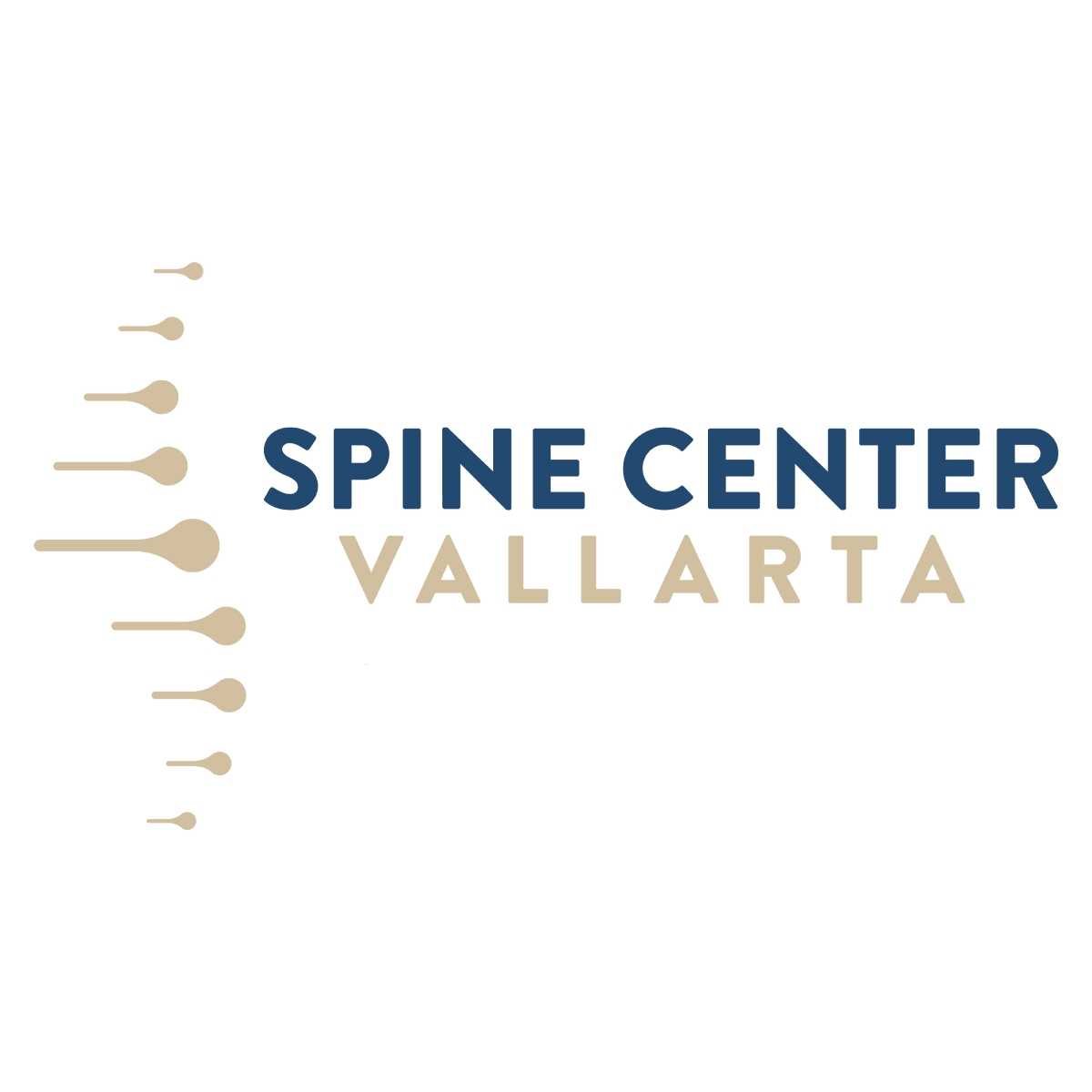Affordable Back Surgery in Mexico: Your Guide
.png)
Spinal surgery can be a life-changing procedure for individuals suffering from chronic back pain, nerve compression, or spinal deformities. However, the high costs associated with such surgeries in countries like the United States and Canada often make them inaccessible for many. Mexico has emerged as a leading destination for medical tourism, particularly for spinal procedures, offering high-quality care at a fraction of the price. This guide will delve into the various aspects of spinal surgery costs in Mexico, providing clear answers to common questions and highlighting why it's a viable option for those seeking affordable and effective treatment. You will learn about typical prices, what’s included in the cost, and the factors that influence the overall expense. This information is designed to help you make an informed decision about your spinal care.
How much does spinal surgery cost in Mexico compared to the US or Canada?
"Spinal surgery in Mexico is significantly more affordable, often costing 50% to 70% less than in the United States or Canada, with prices ranging from $7,000 to $30,000 depending on the procedure."
The cost of spinal surgery in Mexico presents a compelling alternative for many patients. For instance, a spinal fusion that might cost between $60,000 and $100,000 in the US could be performed for $10,000 to $20,000 in Mexico. Similarly, a herniated disc repair, which can be $40,000 to $60,000 in the US, typically ranges from $8,000 to $12,000 in Mexico. These significant savings are attributed to lower operational costs, competitive market rates, and favorable currency exchange rates in Mexico. Patients can achieve substantial financial relief without compromising on the quality of medical care.
What factors influence the cost of spinal surgery in Mexico?
"The cost of spinal surgery in Mexico is influenced by the type and complexity of the procedure, the surgeon's fees, the hospital or clinic's reputation, the materials and implants used, and the length of hospital stay and rehabilitation."
Several key factors determine the final price of spinal surgery in Mexico. The specific type of surgery is paramount; for example, a simple discectomy will generally be less expensive than a complex spinal fusion or scoliosis correction. The experience and reputation of the spinal surgeon also play a role, with highly sought-after specialists potentially charging more. The hospital or clinic chosen can impact the cost, as premier facilities with advanced technology and international accreditations may have higher fees. Additionally, the cost of implants, such as rods, screws, or artificial discs, and the duration of your hospital stay and any required post-operative rehabilitation significantly affect the overall expense.
What is the average cost of a discectomy in Mexico?
"The average cost of a discectomy in Mexico typically ranges from $6,000 to $15,000, which includes the removal of a herniated disc to relieve nerve pressure."
A discectomy is a common procedure performed to remove portions of a herniated disc that are pressing on spinal nerves, causing pain, numbness, or weakness. In Mexico, patients can expect to pay considerably less for this surgery compared to North American prices. The price often covers the surgeon's fees, anesthesia, hospital facilities, and basic post-operative care. The specific cost can vary based on the location within Mexico (e.g., Tijuana, Guadalajara, Mexico City) and the specific clinic chosen, with some packages including pre-operative diagnostics.
How much does a laminectomy cost in Mexico?
A laminectomy is performed to relieve pressure on the spinal cord or nerves, often due to spinal stenosis. This procedure involves removing the lamina, a part of the vertebra, to create more space in the spinal canal. The cost in Mexico for a laminectomy is significantly lower than in the US, where it can exceed $40,000. These prices typically encompass the surgical fees, hospital stay, and initial recovery support. Patients seeking this type of spinal decompression can find substantial savings in Mexico.
What is the cost of spinal fusion surgery in Mexico?
Spinal fusion is a more extensive surgery that permanently connects two or more vertebrae to eliminate motion between them, often used to treat conditions like spinal instability or severe disc degeneration. This procedure usually involves the use of bone grafts and metal implants. Despite its complexity, spinal fusion in Mexico remains significantly more affordable than in countries like the US, where costs can be upwards of $60,000 to $100,000. The cost usually includes the surgeon’s fees, hospital charges, anesthesia, and the necessary implants.
How much does scoliosis surgery cost in Mexico?
"Scoliosis surgery in Mexico can cost between $15,000 and $30,000, offering a more accessible price point for corrective procedures for spinal curvature."
Scoliosis surgery is performed to correct severe spinal curvature and involves placing rods and screws to straighten and stabilize the spine. This is a highly specialized and often lengthy procedure. Mexico provides a cost-effective solution for scoliosis treatment, with prices being considerably lower than the $50,000+ often seen in the US. The exact price will depend on the severity of the curve, the number of spinal levels involved, and the specific surgical techniques and implants utilized.
Are all-inclusive packages available for spinal surgery in Mexico?
"Yes, many clinics and medical tourism facilitators in Mexico offer all-inclusive packages for spinal surgery, which typically cover the surgery, hospital stay, surgeon and anesthesia fees, ground transportation, and sometimes accommodations."
To simplify the process for international patients, many Mexican medical providers and agencies offer comprehensive packages. These all-inclusive options are designed to provide transparency and convenience, bundling various services into a single price. Such packages can be particularly beneficial for patients traveling from abroad, as they often include airport transfers, pre-operative consultations, the surgery itself, post-operative care, and sometimes even a recovery stay in a local hotel. It is crucial to confirm precisely what is included in any package to avoid unexpected costs.
What is typically included in the cost of spinal surgery in Mexico?
"The typical cost of spinal surgery in Mexico usually includes the surgeon's professional fees, anesthesia, hospital facility charges, basic medications during the hospital stay, and initial post-operative follow-up."
When considering the cost, it's important to understand what is generally covered. This typically includes the expertise of the spinal surgeon, the fees for the anesthesiologist, the use of the operating room and hospital facilities, necessary medical supplies and implants, and routine medications administered during your inpatient stay. Initial post-operative consultations and basic physical therapy sessions during recovery are often also part of the package. However, extensive rehabilitation, long-term physical therapy, travel expenses, and prolonged accommodation might be separate costs.
Are Mexican spine surgeons qualified and experienced?
"Yes, many spine surgeons in Mexico are highly qualified, often trained internationally, board-certified, and possess extensive experience in complex spinal procedures, adhering to international standards of care."
Mexico has invested significantly in its medical infrastructure, attracting and training highly skilled medical professionals. Many Mexican spine surgeons have received training in the US, Europe, or other leading medical centers globally. They are often board-certified and members of international surgical associations, indicating their commitment to high standards of practice and ongoing professional development. Patients can research a surgeon's credentials, experience, and patient reviews to ensure they are choosing a qualified and reputable specialist for their spinal surgery.
What about the quality and safety of spinal surgery in Mexico?
"The quality and safety of spinal surgery in Mexico are generally high in accredited facilities, with many hospitals adhering to international standards and offering modern equipment and technology."
Mexico has several hospitals and clinics that are internationally accredited, notably by organizations like Joint Commission International (JCI). These accreditations signify that the facilities meet rigorous international standards for patient safety and quality of care. Many Mexican hospitals boast state-of-the-art equipment, advanced surgical techniques, and modern operating theaters. While it's essential to research and choose a reputable facility, spinal surgery in Mexico is often considered a safe and effective option, with outcomes comparable to those in more expensive countries.
What are the payment options for spinal surgery in Mexico?
"Payment for spinal surgery in Mexico is typically made via direct bank transfers, credit card payments, or through medical tourism agencies, with some clinics offering flexible payment plans."
Patients usually pay for their spinal surgery directly to the clinic or through a medical tourism facilitator. Common payment methods include wire transfers, major credit cards, and sometimes cash for smaller expenses. Some clinics may offer structured payment plans, especially for more expensive procedures, although this is less common for international patients. It is advisable to discuss payment options and financial arrangements with the chosen clinic or agency well in advance of the procedure to ensure a smooth process.
Is post-operative rehabilitation included in the cost?
"Post-operative rehabilitation is sometimes included in all-inclusive packages for spinal surgery in Mexico, but often, extensive or long-term physical therapy may incur additional costs."
While initial rehabilitation and physical therapy sessions during the hospital stay are often part of the surgical package, prolonged or intensive post-operative physical therapy might be an extra expense. Some all-inclusive packages do incorporate a certain number of rehabilitation sessions, or provide referrals to affiliated rehabilitation centers. Patients should clarify the extent of rehabilitation services included in their chosen plan and budget accordingly for any additional therapy that may be needed for a full recovery.
How long is the recovery period for spinal surgery in Mexico?
"The recovery period for spinal surgery in Mexico varies greatly depending on the specific procedure, but typically involves a hospital stay of a few days, followed by several weeks or months of gradual rehabilitation."
The duration of recovery for spinal surgery is highly individualized. A discectomy might require a few days in the hospital and a few weeks of restricted activity, while a spinal fusion or scoliosis correction could involve a longer hospital stay (e.g., 5-7 days) and several months of diligent rehabilitation. Patients are usually advised to avoid strenuous activities for a period and gradually increase their mobility under the guidance of a physical therapist. Many patients experience significant pain relief and improved function within a few months, with full recovery taking up to a year.
What are the potential risks of spinal surgery?
"The potential risks of spinal surgery, while generally low, include infection, bleeding, nerve damage, implant failure, and complications from anesthesia, which are discussed thoroughly with the patient."
Like any surgical procedure, spinal surgery carries certain inherent risks. These can include a risk of infection at the surgical site, excessive bleeding, potential damage to nerves or the spinal cord, or a possibility of the implants failing (e.g., screws loosening). There are also general anesthesia-related risks, such as adverse reactions. However, modern surgical techniques, advanced imaging, and experienced spine surgeons significantly minimize these risks. Patients are thoroughly informed of all potential complications during their pre-operative consultations.
What should I consider before traveling to Mexico for spinal surgery?
"Before traveling to Mexico for spinal surgery, patients should research clinics and spine surgeons, confirm accreditations, understand the total cost, arrange travel logistics, and prepare necessary medical documents."
Careful planning is essential for a successful medical journey. Key considerations include thoroughly researching potential clinics and spine surgeons to verify their credentials, experience, and patient reviews. It is crucial to confirm any international accreditations the hospital holds. Patients should obtain a detailed breakdown of all costs to avoid surprises and clarify what is included in the price. Arranging travel logistics, including flights, accommodations, and local transportation, is also important. Finally, compiling all relevant medical records, including diagnostic images and prior treatment history, will facilitate the consultation and treatment process.
Can I get a virtual consultation with a Mexican spine surgeon?
"Yes, many Mexican spine surgeons and clinics offer virtual consultations for international patients, allowing for preliminary assessments and treatment discussions before travel."
To make the process more convenient for international patients, a growing number of Mexican spine surgeons provide virtual consultations. This allows potential patients to share their medical records, imaging (like MRIs or CT scans), and discuss their condition and treatment options with a specialist from their home country. A virtual consultation is an excellent way to get an initial opinion, understand the proposed treatment plan, and clarify costs before making travel arrangements.
How do I choose the best clinic for spinal surgery in Mexico?
"Choosing the best clinic for spinal surgery in Mexico involves researching accreditations, surgeon's qualifications, patient testimonials, technology, and transparent pricing."
Selecting the right clinic is a critical step. Look for facilities that hold international accreditations like JCI, which indicates a commitment to global standards of care. Verify the spine surgeons' qualifications, board certifications, and experience with the specific procedure you need. Reading patient testimonials and reviews can provide insights into other patients' experiences. Consider the level of technology and equipment available at the clinic. Finally, prioritize clinics that offer transparent pricing and clear communication regarding all aspects of your spinal surgery journey.
Is medical tourism in Mexico safe for spinal surgery?
"Medical tourism for spinal surgery in Mexico is generally safe, especially when choosing accredited hospitals with experienced spine surgeons and established patient support systems."
Mexico has a well-developed medical tourism industry with many reputable hospitals and clinics that prioritize patient safety and high-quality care. While general travel safety precautions should always be observed, the medical procedures themselves are typically performed in environments that adhere to strict medical standards. Opting for internationally accredited facilities and working with established medical tourism facilitators can further enhance the safety and success of your spinal surgery experience in Mexico.
What are common types of spinal surgeries performed in Mexico?
"Common types of spinal surgery performed in Mexico include discectomy, laminectomy, spinal fusion, artificial disc replacement, and procedures for scoliosis correction."
Mexican clinics offer a wide range of spinal surgical procedures to address various conditions. These include microdiscectomy for herniated discs, laminectomy for spinal stenosis, different types of spinal fusion (e.g., anterior lumbar interbody fusion (ALIF), posterior lumbar interbody fusion (PLIF)) for instability, and complex surgeries for scoliosis and other spinal deformities. Additionally, procedures like artificial disc replacement are also available, offering alternatives to fusion in suitable cases. The choice of procedure depends on the patient's specific diagnosis and the surgeon's recommendation.
How long do spinal implants last?
"The longevity of spinal implants used in spinal surgery varies, but many are designed to last for 10 to 20 years or more, depending on the type of implant, patient activity, and overall health."
Spinal implants, such as rods, screws, and artificial discs, are made from durable biocompatible materials like titanium or medical-grade plastics. While designed for long-term use, their longevity can be influenced by several factors. Patient activity levels, adherence to post-operative care, bone quality, and the success of the fusion (if applicable) can all affect how long the implants remain effective. Regular follow-up with your healthcare provider is crucial to monitor the condition of the implants and overall spinal health.
What are the non-surgical alternatives to spinal surgery?
"Non-surgical alternatives to spinal surgery often include physical therapy, pain management medications, epidural injections, chiropractic care, and lifestyle modifications."
Before considering spinal surgery, many patients explore conservative, non-surgical treatment options. These can include targeted physical therapy to strengthen muscles and improve flexibility, various pain medications (over-the-counter or prescription), and epidural steroid injections to reduce inflammation and pain. Chiropractic adjustments, acupuncture, and lifestyle changes such as weight management and ergonomic adjustments can also provide relief. Spinal surgery is typically considered when these conservative treatments fail to alleviate symptoms or when there is progressive neurological deficit or significant spinal instability.
What are the benefits of choosing Mexico for spinal surgery?
"The benefits of choosing Mexico for spinal surgery include significant cost savings, reduced wait times, access to highly qualified spine surgeons and modern facilities, and the opportunity for recovery in a pleasant environment."
Mexico offers numerous advantages for patients seeking spinal surgery. The most prominent benefit is the substantial cost savings compared to procedures in the US and Canada. Patients can often avoid long wait times that are common in some public healthcare systems. Many Mexican hospitals boast modern infrastructure, advanced technology, and skilled spine surgeons who adhere to international standards. The country's proximity to North America also makes travel convenient, and the opportunity to recover in a warmer, often resort-like setting, can contribute to a more positive overall experience.
For more information and to explore your options for affordable and high-quality healthcare services, please explore PlacidWay.


.png)
.png)













Share this listing